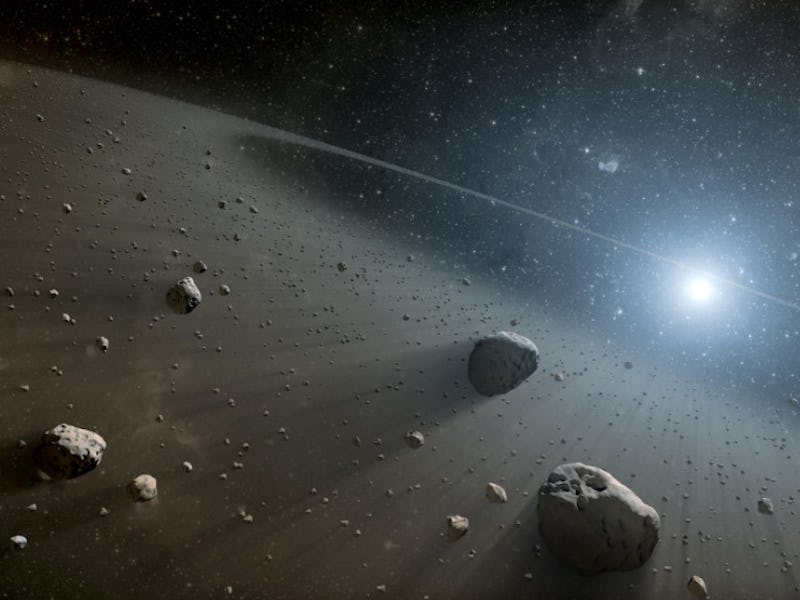Here's How the Sun Vaporizes Asteroids
Scientists have solved the case of the missing asteroids.

Scientists now know how near-Earth objects actually disappear: They evaporate in a long fizzle, very far from the sun.
In a study published today in Nature, an international team of scientists explain how they originally set out to document the NEO (near-Earth object) population as a way to track which asteroids might hit Earth, or how those objects might interact with future spacecraft traveling to Mars and beyond. They’ve already identified about 9,000 new NEOs by analyzing over 100,000 images collected by the Tucson-based Catalina Sky Survey (CSS) over an eight-year period.
See, most NEOs emerge out of the asteroid belt that sits between Mars’ and Jupiter’s orbits. Sometimes, an asteroid zipping about in line gets pushed off course by excess solar heat, and becomes a stray. The gravity of Saturn and Jupiter push that asteroid on a path close to Earth.
To conduct their analysis, the team developed a new kind of software that can compute the likelihood for asteroids of different orbits to be detected by CSS. That’s when they ran into a problem: Their model predicted that there should be 10 times as many objects on orbits that approached the sun within 10 solar diameters. Yet those objects were strangely absent from the images.
After some troubleshooting, the team realized their software was just fine. The objects weren’t there because they didn’t exist anymore — the power of the sun was just slowly vaporizing all the space rocks that moved too close to the massive star.
The intense heat from the Sun causes the asteroid's surface to expand and fracture, and some of the material breaks off. As the surface material disintegrates, it creates dust and pebbles that spread out along the asteroid's orbit with time. If the orbit of the dust and pebbles ever intersects Earth, it can create a meteor shower.
“The discovery that asteroids must be breaking up when they approach too close to the Sun was surprising and that’s why we spent so much time verifying our calculations,” said Robert Jedicke of the University of Hawaii Institute for Astronomy, a co-author of the study.
The results don’t just solve a mystery that was plaguing this particular research team. It also helps explain why observed meteor streams close to the sun seem to have no parent NEO that’s leading the pack — because the parent object gets burned up by the sun and ends leaving behind the stream of meteors itself. The findings also suggests that dark asteroids — which don’t reflect as much light — vanish father away from the sun than brighter ones, because they are more easily destroyed.
That latter insight is particularly useful for the future of asteroid exploration and mining — if we can determine the composition of the rock based solely on models that keep track of NEO orbits and sizes, we could predict what’s inside the rock itself, and whether its worth jumping out into space.
Or also, you know, how much firepower we might need to blow an asteroid up.
When you remember that some asteroids are big enough to potentially destroy all life on Earth in the event of a collision, you want to find out where the hell those little buggers are.
For the longest time, scientists just assumed that most comets and asteroids — if they didn’t hit Earth — just veered off toward a fiery death by plunging into the sun. Turns out, that’s not entirely the case.